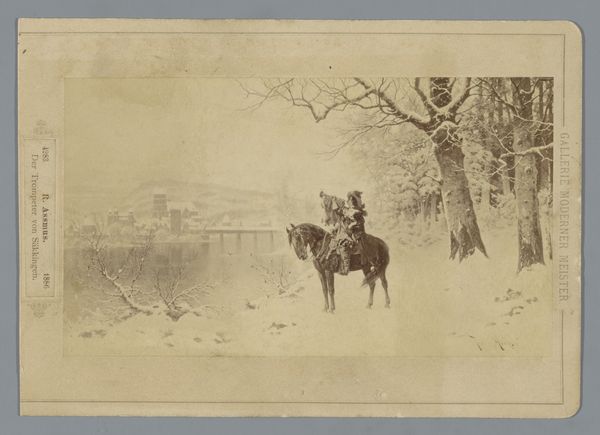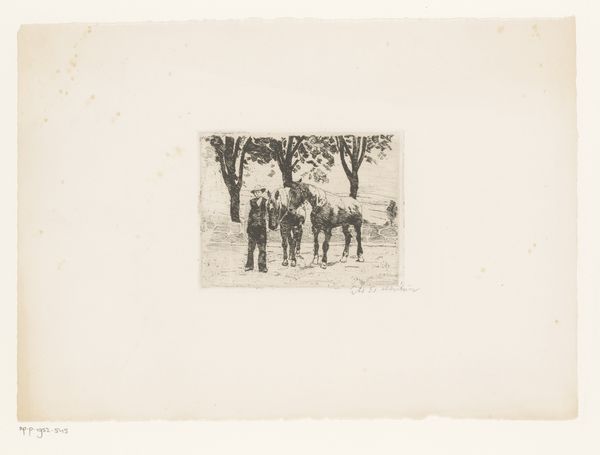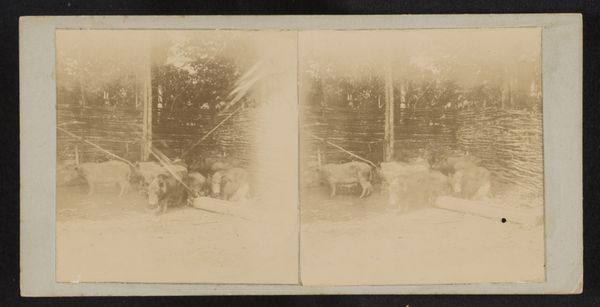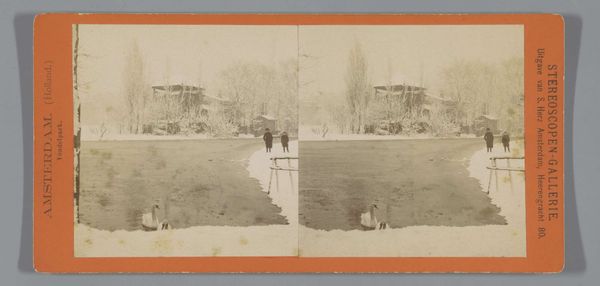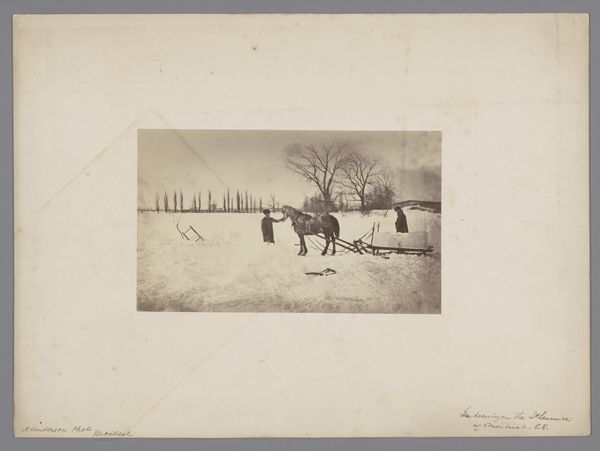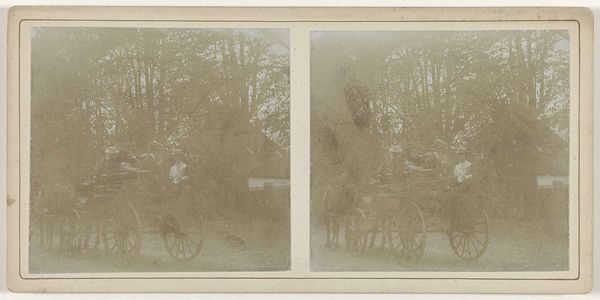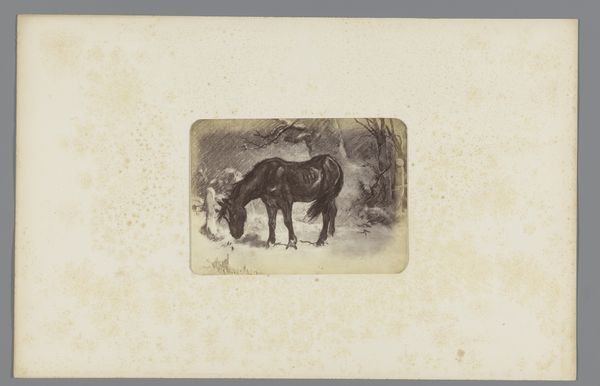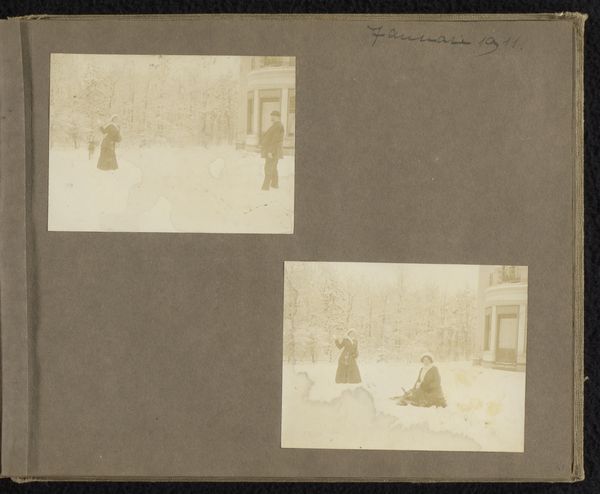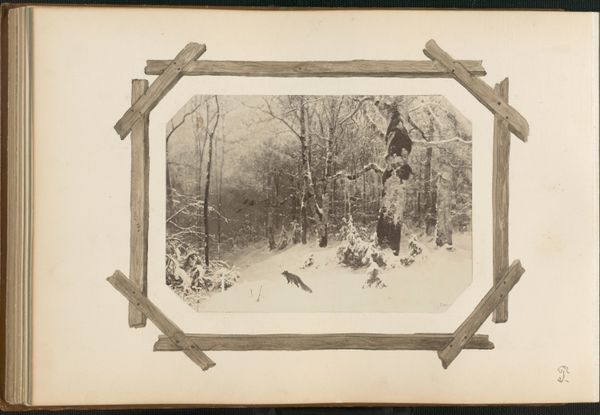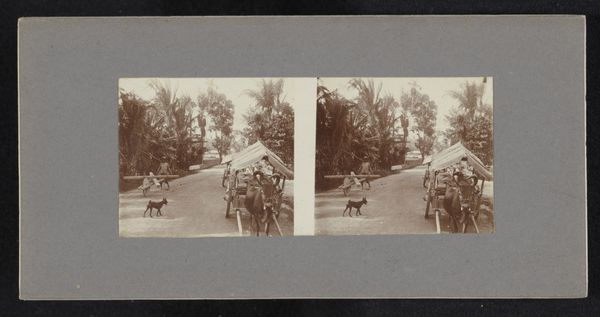
Dimensions: height 85 mm, width 170 mm
Copyright: Rijks Museum: Open Domain
Curator: This is "Mensen die sneeuwruimen in Engeland," or "People Clearing Snow in England," made sometime between 1854 and 1880 by the London Stereoscopic Company. Editor: Visually, it strikes me as an exercise in tonality—an almost monochrome study in how light and shadow interact on the landscape. The composition, while seemingly simple, guides the eye with its subtle contrasts. Curator: Indeed, understanding the historical context of pictorialism within photography helps us see this work as more than just a landscape. Think about the social role of photography in the mid-19th century. How might the representation of everyday labor, such as snow removal, reflect and perhaps shape perceptions of class, work ethic, and the relationship between people and their environment in England? Editor: Interesting perspective! From a purely formal angle, consider the materiality of the photograph itself. The tones achieved through the photographic process, perhaps albumen printing or a similar method of the era, creates this almost dreamy, ethereal effect. Curator: Right. This pictorialist approach often sought to elevate photography to the status of fine art, emulating painting through composition and atmospheric effects. The figures, dwarfed by the snowy landscape, are placed in ways that mirror the socioeconomic reality of individuals vis-à-vis larger structures. Their work is literally clearing the path for others. Editor: The structural relationships here are very deliberate. The stark lines of the trees contrast sharply with the soft, rounded shapes of the snowdrifts. This tension creates visual interest and draws the eye to different zones. There is a balance here, wouldn't you say? Curator: Absolutely. Thinking about gender too: who are these "people?" We can only guess their identities, but what assumptions might a viewer at the time have made based on their perceived class and gender, given the laborious task they are undertaking? Editor: It becomes an investigation of negative space. Without the heavy snowfall and nuanced gradient work throughout the work, these silhouetted laborers might have just become faceless ciphers instead. A meditation on the effect of erasure! Curator: Yes, both a clearing and an erasure are taking place, it seems. The photographic work, like this winter scene itself, evokes that intersectional perspective. Editor: After closely engaging with the photographic surface and broader narrative around pictorialism and London society, it seems the true value resides with how the artist transformed a seemingly banal activity into this really nuanced aesthetic object. Curator: Considering the context, combined with that intense engagement with both subjects portrayed in the artwork as well as the technique the artists have taken to evoke this experience, helps us understand this image within an important artistic, social, and political lineage.
Comments
No comments
Be the first to comment and join the conversation on the ultimate creative platform.
